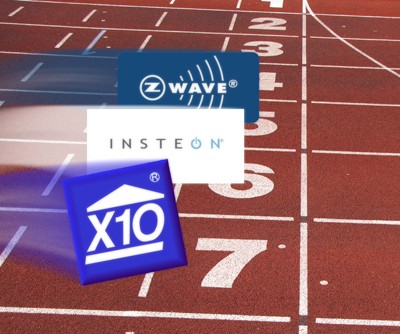Security 2.0
 Change is coming, like it or not...
Change is coming, like it or not...
There is currently a movement by many businesses within our industry to get involved with much more than just 'vanilla' alarm installations. What does the near and distant future hold for those involved with service delivery, manufacturing, installation or the monitoring of such systems? Are we truly on the way to Security 2.0?
It is a clichéd term, but we are currently on a one way street towards our industry either embracing other technologies and service offerings OR facing the very real prospect that our services will be provided by other industries in our place.
They will not provide these at a standard which is anything close to our current quality and performance, yet with the apparent move towards an eventual privatisation of emergency response and with apathy from some key stakeholders towards resolving these issues we must accept that maybe the way we have always done things is not perhaps the only viable solution.
Growing demands of the 'hyper-connected' generation...
End users have been somewhat spoilt by an age of technology that has provided information at their fingertips. Interaction is available instantly, on-demand and in several different formats allowing end users to decide to use their laptop, phone or several other mediums to check their status and to provide a means for them to control.
This has been also available in our industry in many ways with smart phone apps for control panels, CCTV systems and direct access to control their alarm monitoring.
This is not going far enough though. This is control in a granular fashion with multiple applications and protocols being used and a 'clunky' approach to solving issues and having to cross reference several systems to get answers.
The user experience (UX) needs to improve drastically if we are to keep up.
Events such as CES2013 have highlighted the developments in white goods and home automation systems showcasing smart homes and their benefits. This has the potential to develop into an 'expectation' in new homes as clients look to a UX that matches the rapid pace of their changing demands.
What, where and how..
So where do we fit into all this, considering there is already an established and rapidly growing industry providing home automation and AV solutions?
As an industry we have previously provided 'system integration' which allowed end users to benefit from the best in class of each type of product whilst still allowing such systems to work together in what was a seamless manner offering a fantastic UX as far as the end user is concerned.
This has always been a strength in our industry and one that we have shown great expertise in, though this has been supported by rigorous standards and protocols with flexibility and the enforcement of these among equipment manufacturers.
If we are to provide the same level of interoperability with evolving markets and next generation products that are not yet available (Google Glass / iWatch / Etc...) then we need to begin to agree on how we are going to achieve this.
One of the most critical points is to try and avoid the closed (proprietary) protocol approach and inflexible standards that have stifled our industry to date which have been a major part of our inability to move as quickly as the technology has.
We should consider being less technology specific and aim to instead define in our standards a clear end goal and aspirational targets yet with scope for multiple methods of meeting these.
Standards are by their nature outdated as soon as they are released. We should aim to find ways to improve engagement with their development and enforcement and look to other industries to ensure that we are delivering the best possible offering. Is the current system effective at delivering the intended aims such as protecting end users?
One of the most crucial elements is to select the most appropriate 'eco-system' of a platform and protocol combination that will support developments and allow complete interoperability.
Choosing a winner...
In moving forwards there are currently several platforms to allow communication between our current systems and likely potential future developments.
We already have some systems available to support building management and 'smart home' systems:
-
X-10: Basic protocol which has been in use for a while. Uses home power network
-
Z-Wave: Widely supported product range and was the first wireless protocol
-
Modbus: Very basic wired serial connectivity
-
Insteon: Enables wireless comms on X-10 format and improved UX
-
ZigBee: Newer wireless technology but struggles if multiple manufacturers kit used
Both Z-Wave and ZigBee have an alliance behind them to promote the benefits of the platform and to support uptake.
In some cases a combination of these technologies can be used to acheive the end result. For example some Smart Meters use Modbus protocol to exchange data via an RS232 port but then Z-Wave or ZigBee or others, to then pass that information on outside the device.
So how do we pick a winner from all of these standards and more? What benefit is there from all manufacturers and system integrators using the same languages?
We can focus on patching and fixing multiple disperate protocols until we are blue in the face, or, we can all agree on an approach and then put that same energy into developing the possibilities that are enabled through the agreed technology.
There may be countless disagreements at first, but if we can stand united as an industry then that would give us strength to tackle some of the more difficult challenges and showcase the potential of our place in this emergent market.
We have in the past struggled to work collaboratively, but social media and changing attitudes now mean that we can have much more open and frank discussion and can see the immediate benefits of doing so. As an industry we have a lot to offer and we can create world class solutions when we work effectively.
I am optimistic that we can all pick a winner and that we can all succeed.
I would ask all readers to consider what they can do to work effectively with others to ensure that we provide a solution that puts us on the map as world leaders in innovation and effective collaboration.
Legal Notice: All images and logos remain trademarks of their respective owners and are used in accordance with the fair use of a copyrighted work for purposes such as comment, criticism, news reporting, teaching or research.


2 Comments
Recommended Comments